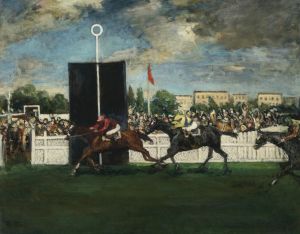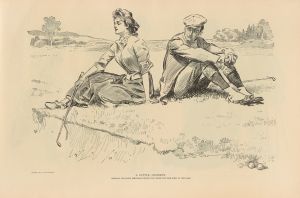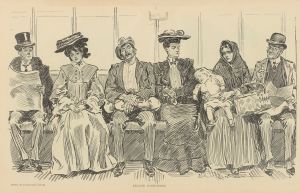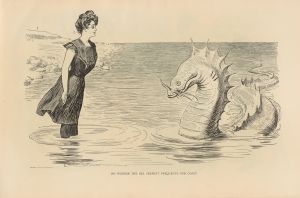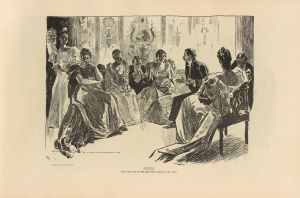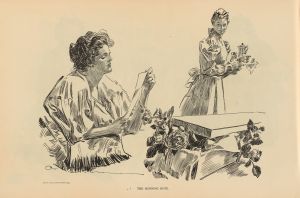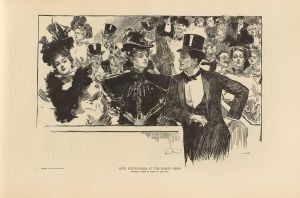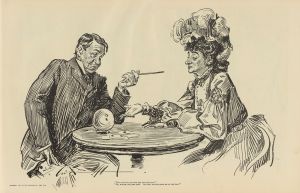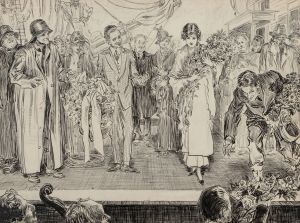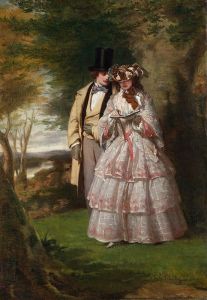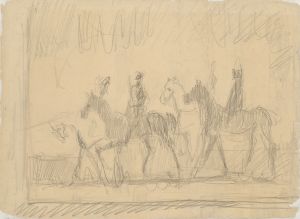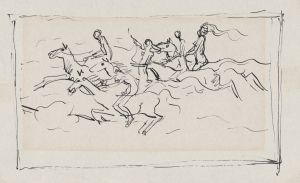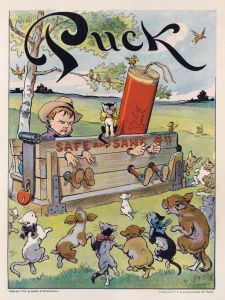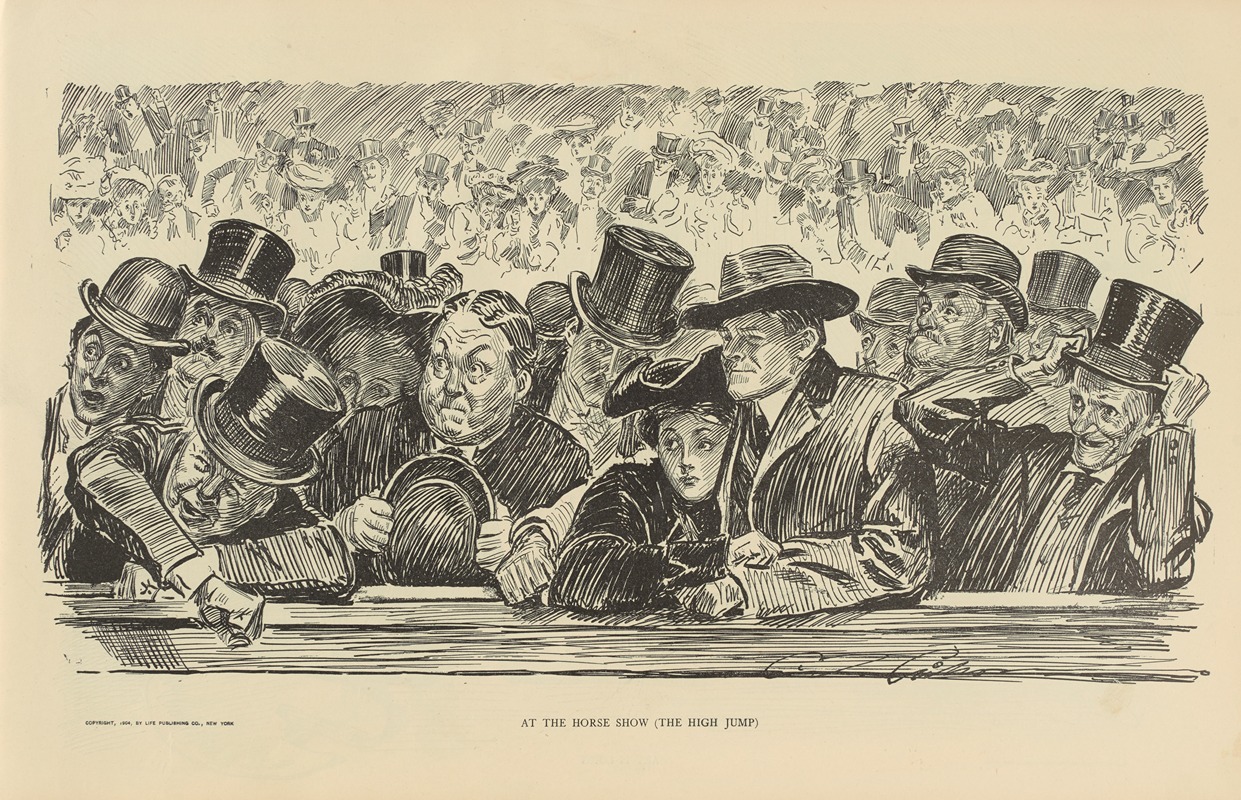
At the horse show
A hand-painted replica of Charles Dana Gibson’s masterpiece At the horse show, meticulously crafted by professional artists to capture the true essence of the original. Each piece is created with museum-quality canvas and rare mineral pigments, carefully painted by experienced artists with delicate brushstrokes and rich, layered colors to perfectly recreate the texture of the original artwork. Unlike machine-printed reproductions, this hand-painted version brings the painting to life, infused with the artist’s emotions and skill in every stroke. Whether for personal collection or home decoration, it instantly elevates the artistic atmosphere of any space.
"At the Horse Show" is an iconic illustration created by the American artist Charles Dana Gibson. Gibson, born on September 14, 1867, in Roxbury, Massachusetts, was a prominent illustrator in the late 19th and early 20th centuries. He is best known for his creation of the "Gibson Girl," a personification of the ideal American woman of that era.
The illustration "At the Horse Show" was first published in the late 1890s. It depicts a fashionable and elegant scene at a horse show, a popular social event during that time. The setting is characterized by well-dressed men and women, showcasing the high society's interest in equestrian events. The central figure in the illustration is a young woman, embodying the quintessential Gibson Girl with her poised demeanor, stylish attire, and confident presence.
Gibson's work, including "At the Horse Show," played a significant role in shaping the visual culture of the Gilded Age and the Progressive Era in the United States. His illustrations were widely published in magazines such as Life, Harper's Weekly, and Scribner's, making him one of the most influential illustrators of his time. The Gibson Girl became a cultural icon, representing a new standard of femininity that combined beauty, independence, and social grace.
"At the Horse Show" exemplifies Gibson's skill in capturing the nuances of social interactions and the subtleties of fashion. The detailed line work and the expressive faces of the characters highlight his mastery in illustration. The scene not only reflects the leisure activities of the upper class but also serves as a commentary on the social dynamics and gender roles of the period.
Gibson's illustrations, including "At the Horse Show," were instrumental in popularizing the image of the modern American woman. The Gibson Girl was seen as a progressive figure, breaking away from the more restrictive Victorian ideals of womanhood. She was athletic, educated, and socially active, embodying the aspirations of many women during the turn of the century.
Charles Dana Gibson continued to produce influential works throughout his career, and his legacy endures in the history of American art and illustration. "At the Horse Show" remains a testament to his ability to capture the spirit of his time and the evolving image of women in society. Gibson passed away on December 23, 1944, but his contributions to the world of illustration continue to be celebrated and studied.
In summary, "At the Horse Show" by Charles Dana Gibson is a significant work that reflects the cultural and social milieu of late 19th-century America. Through his depiction of a fashionable equestrian event, Gibson not only showcased his artistic talent but also contributed to the evolving portrayal of women in American society.





